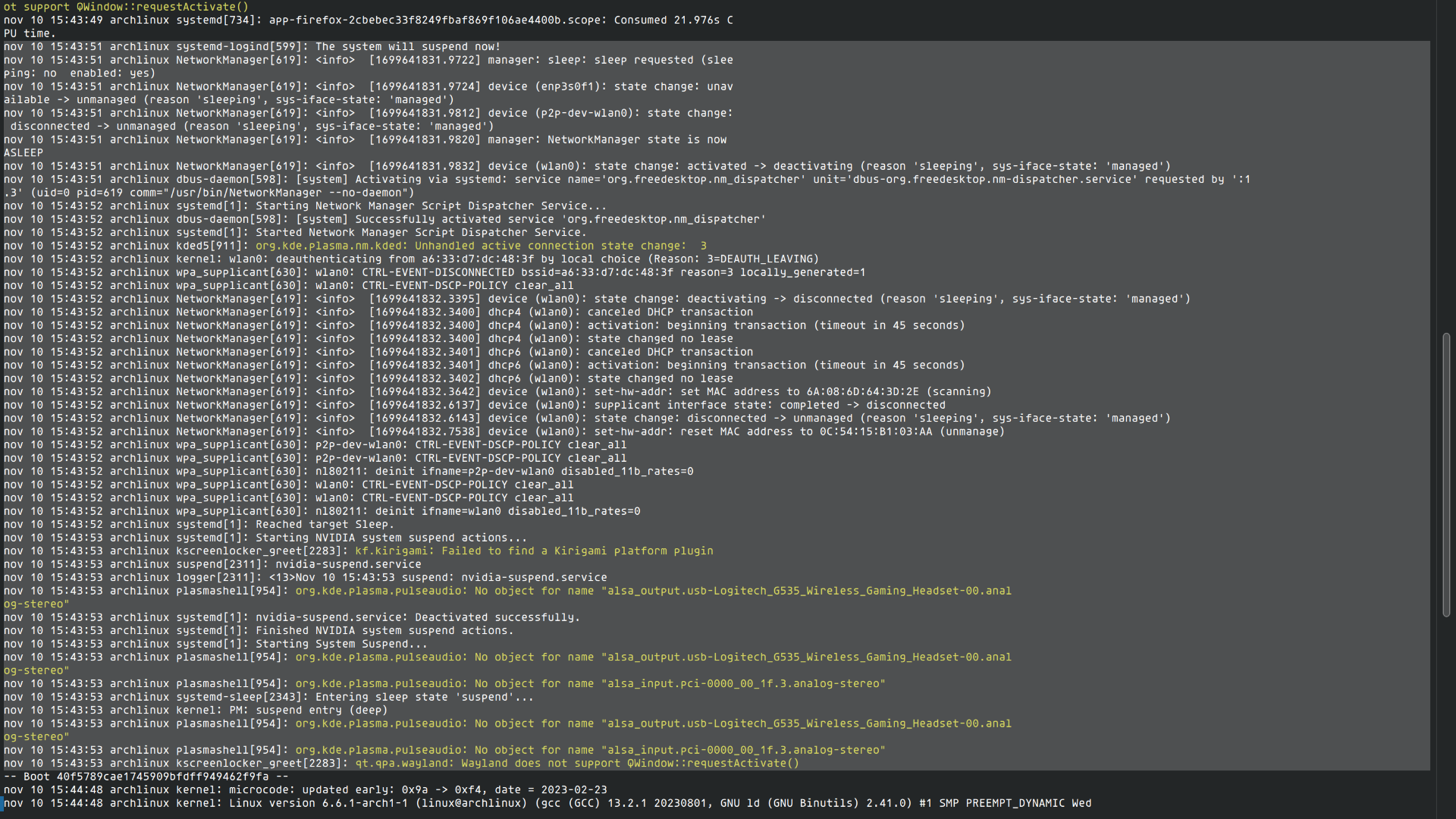Qvest
Thanks for the reply. What's weird is that I've done what the endeavouros forums said (and, looking through them, they did similar steps as the ones outlined on the archwiki: https://wiki.archlinux.org/title/NVIDIA/Tips_and_tricks#Preserve_video_memory_after_suspend and I still get that black frozen screen with just a cursor. I'm guessing this is exclusively NVIDIA's fault... or KDE's as I never had this problem on GNOME. Thanks anyhow
Yeah. GNOME does this probably because it's safer and ensures that the packages are downloaded in full before applying updates in an environment that is less likely for something to go wrong (Although I particularly don't know how true this is)
One thing I give Linux credit for is how it handles updates. Like, yeah, Linux doesn't force updates, that we all know, but I like how at least in the GNOME desktop, there is no "Update and action" button, there is only the shutdown and restart buttons, where if I am to press either, the system will ask me if I want to install updates or not with a nice box to tick the option. Nowhere near as cluttered as it is in the picture.
It's a cool concept in the sense that it obfuscates the user by filling the advertising algorithm with garbage so that profiling supposedly becomes more difficult. I don't use it as I don't need this feature and just want to block ads (uBlock Origin is the best content-blocker right now), but if you want the features, you can use it.
A plus is that it is also based on uBlock Origin
And they're big supporters and developers of Linux
Not looking to disagree, but do you have a source on the "developers" part?
by the same logic, they won't know what you do inside Tails, nor when you boot it up
I don't think downloading directly from Spotify is possible, considering they have DRM (I might not know what I am talking about, feel free to criticize). And I tried downloading from Spotify directly using yt-dlp.
That said, spotdl seems to only download from YouTube (which is not DRM protected). So what I would recommend you do is ignore ChatGPT and use a well-known tool (such as yt-dlp) in the terminal. It is as intuitive as it gets and it does not require you to do scripting (unless you want to). And find (or create) a playlist using your YouTube account and download that using yt-dlp flags to convert the mp4 or webm files into mp3 or other
I think the docs will have what you're looking for: https://github.com/yt-dlp/yt-dlp#usage-and-options and if not, good ol' internet search is a couple keystrokes away
If you don't know how to read code, then you pretty much have to trust them, and all other open-source software out there. The good thing with FOSS is that there's probably someone who cares about it enough to read it and audit it, although there can also be a chance that no knowledgeable person cares about the code so no one ends up actually knowing what it's doing.
I don't know how to read code, so I pretty much have to trust all of the FOSS that I use. Although open-source is usually more trustworthy than proprietary counterparts (read: PRISM)
Some games from Steam can still be used without Steam's DRM. It's a little difficult to pull it off, but it can be done

this is exceptionally true from my experience with Spotify. I had downloaded a playlist that had a specific song. One day I went to play my locally downloaded playlist only to glance over it and see that the song was unavailable. I had the song downloaded. In my device and it still removed the song. No warnings, no nothing. Ever since, I downloaded everything locally and completely ditched Spotify. Fuck this scummy behaviour